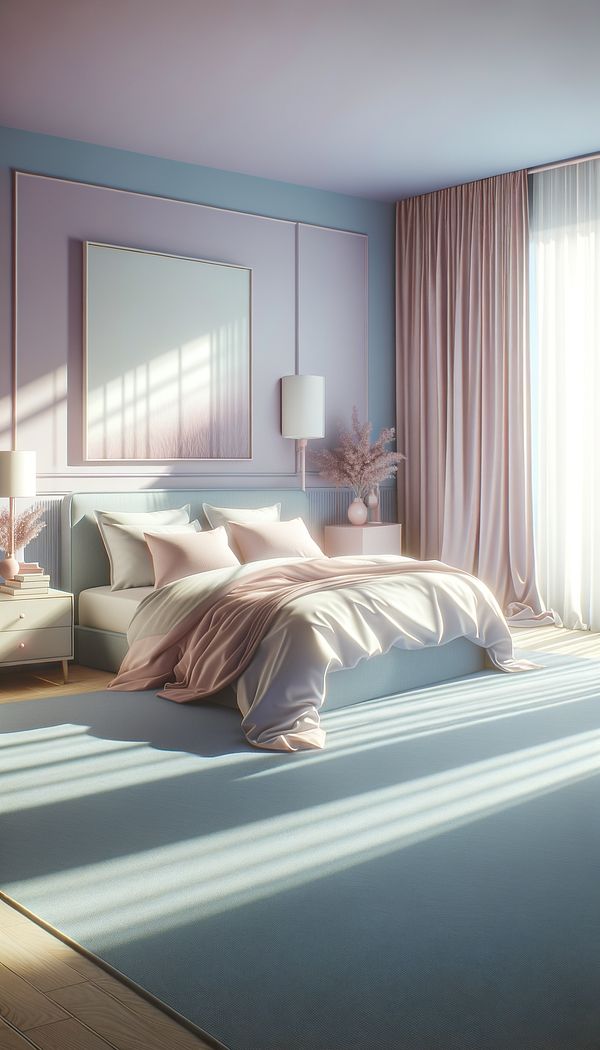What is Pastels?
Pastels refer to soft, light colors used in interior design.
Description
Pastels are light, soothing colors that carry the essence of softness and lightness. They are achieved by adding white to a pure color, which results in a muted tone that's often described as soft, washed out, or milky. Common pastel shades include baby blue, mint green, soft pink, lavender, peach, and pale yellow. These colors have a calming effect and are favored for creating peaceful, serene environments.
In the context of interior design, pastels are used to add a touch of subtle color without overwhelming a space. They work well in a variety of design styles, especially those seeking to evoke a delicate, airy, or whimsical ambiance, such as shabby chic, Scandinavian, or coastal. Pastels are versatile and can be used in any room of the house, from kitchens and living rooms to bedrooms and bathrooms.
When integrating pastels into your home, consider them as background tones for walls or large furniture pieces. They pair beautifully with light neutrals, soft whites, and even bold colors for a playful contrast. Combining multiple pastel shades in one room can also create a harmonious look, ideal for nursery designs or soft, romantic spaces.
Usage
Pastels are commonly used in nursery designs due to their calming and soft appearance. They are also popular in living rooms and bedrooms where a peaceful ambiance is desired. Pastels can be found in a variety of materials, including wall paint, furniture, textiles, and decorative accessories.
FAQs
-
Can pastels be used in any room?
Yes, pastels are versatile and can be effectively used in any room, creating a calming and serene atmosphere.
-
Do pastels go out of style?
Pastel colors have timeless appeal in interior design, though their popularity may vary with design trends. They often return to favor for their soft and soothing qualities.
-
Can pastels be combined with other colors?
Absolutely, pastels pair well with light neutrals, soft whites, and can even be combined with bold colors for a playful contrast or with multiple pastel shades for a harmonious look.
Practical Application
To incorporate pastels into your design, start with a pastel base for walls or large pieces of furniture and layer in accents of slightly bolder colors or additional pastel shades. Texture also plays a significant role; blending different materials can add depth and interest to a pastel room. Additionally, natural light enhances the softness of pastels, so aim for spaces with good natural lighting or strategically place lamps to achieve this effect.
-
Materials & Textiles360 articles
-
Lighting111 articles
-
Color & Patterns154 articles
-
Textiles & Upholstery252 articles
-
Decorating Principles & Elements330 articles
-
SymmetrySymmetry in interior design refers to a balanced distribution of visual weight on either side of a central axis.
-
LayeredLayered refers to the technique of adding multiple elements to create depth and interest in an interior design.
-
NSF - National Sanitation FoundationNSF International is a global independent organization that develops standards, and tests and certifies products in the interest of public health and safety.
-
VarietyVariety in interior design refers to the quality of being different or diverse.
-
Pillow Top MattressA pillow top mattress is a mattress that features an additional upholstery layer sewn on top for extra comfort.
